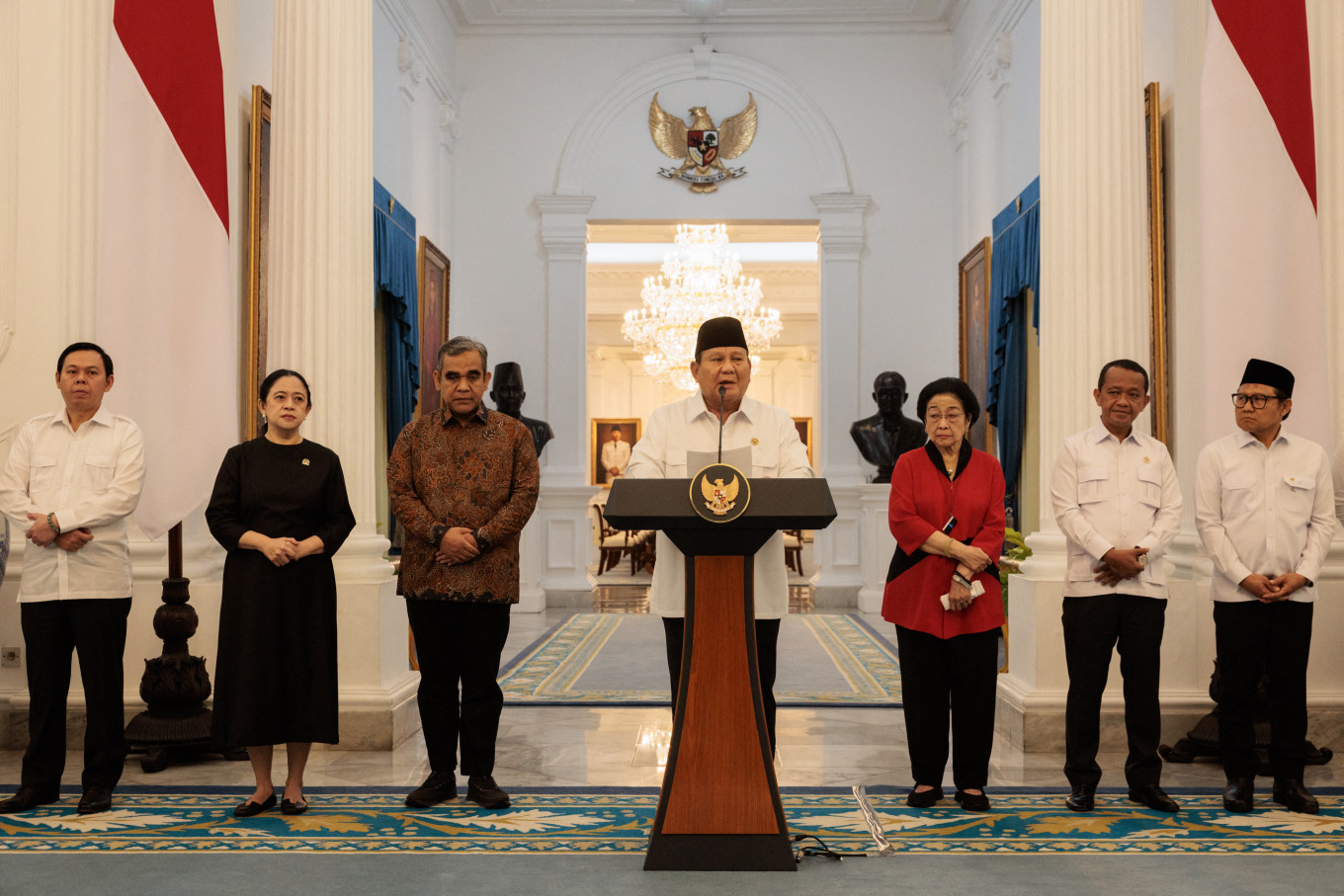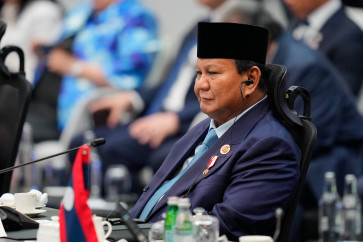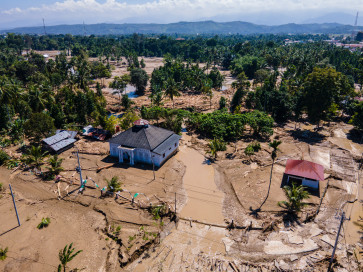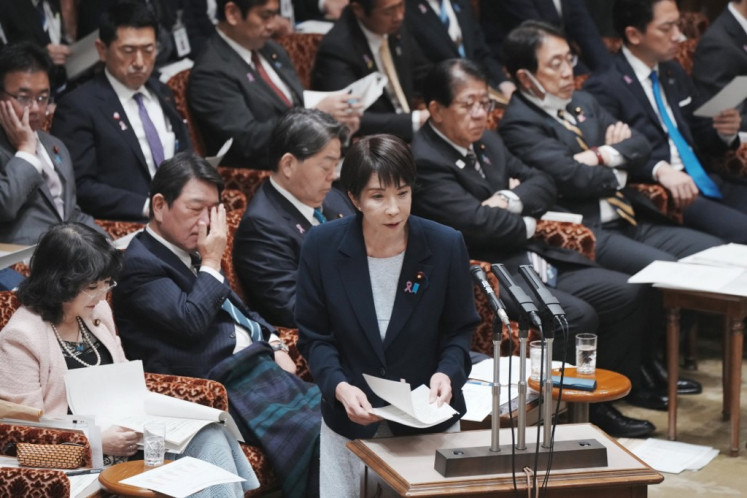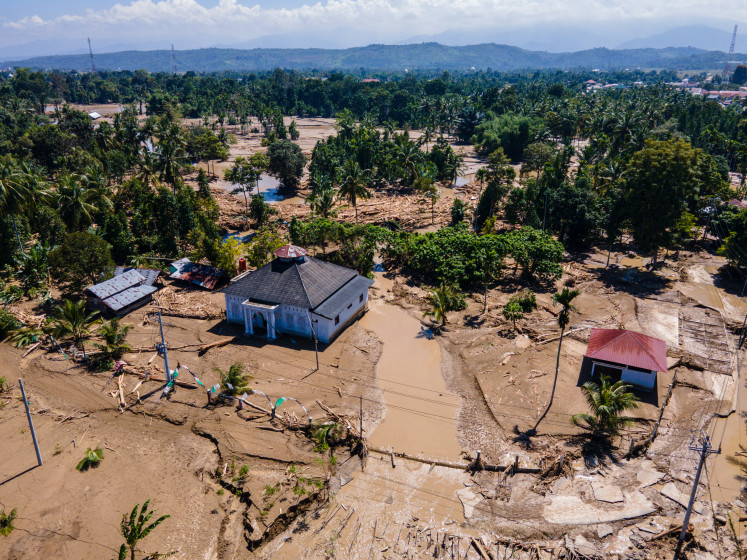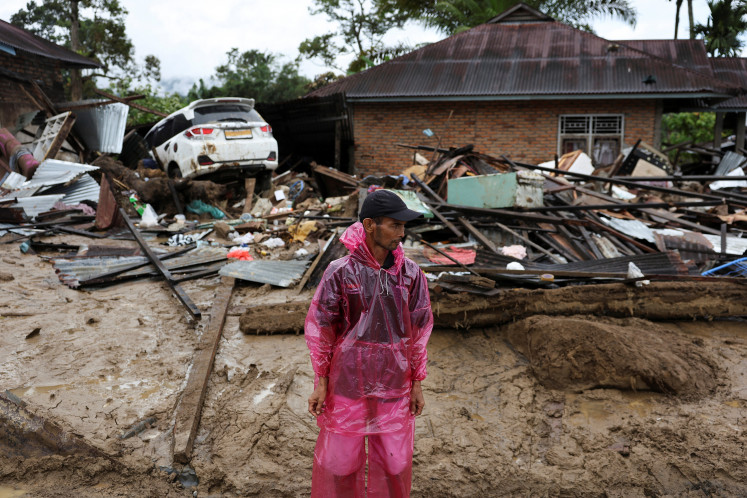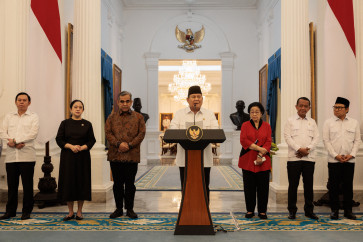Popular Reads
Top Results
Can't find what you're looking for?
View all search resultsPopular Reads
Top Results
Can't find what you're looking for?
View all search resultsChange of narratives and the state’s return
Prabowo’s government and its loyalists seek to redefine the protests not as genuine expressions of public frustration, but as politically orchestrated chaos.
Change text size
Gift Premium Articles
to Anyone
I
t was a bright Monday morning at the traffic circle in front of Gadjah Mada University in Yogyakarta, but the mood was anything but calm. Thousands of protesters gathered again, undeterred by President Prabowo Subianto’s weekend directive to the police and military to crack down on so-called “anarchist” demonstrators. Military vehicles patrolled major cities. National Police chief Gen. Listyo Sigit Prabowo appeared in a video allegedly authorizing the use of rubber bullets to stop destructive protesters.
The intimidation was clear. The people, however, were not easily cowed.
These protesters, including students, workers and the urban poor, were under no illusions. They know meaningful change will not come overnight. Yet, even as the crowds grew, the state was working furiously to undermine them, not through dialogue or reform, but through narrative warfare.
Prabowo’s government and its loyalists have sought to redefine the protests not as genuine expressions of public frustration, but as politically orchestrated chaos. This reframing is strategic, not accidental.
For supporters of the Indonesian Democratic Party of Struggle (PDI-P), the largest remaining opposition force, though its chairwoman Megawati Soekarnoputri has been cozying up to Prabowo and is likely to join his government, the protests are seen merely as attempts to delegitimize Prabowo’s administration and topple the ex-general, paving the way for Vice President Gibran Rakabuming Raka to take over, much like when Soeharto was ousted 27 years ago and his vice president, BJ Habibie, rose to power.
Adding fuel to this narrative are recent reports of government and police buildings set ablaze in several cities. Social media videos and eyewitness accounts describe unidentified individuals, often men with crew-cut hair and coordinated movements, igniting fires before quickly disappearing. The suggestion is clear: The demonstrations are being infiltrated by free riders and agents provocateurs, potentially from within state-linked groups or even hired actors, whose job is to delegitimize the movement and justify the crackdown.
This tactic is not new. Across the region, from Thailand to Myanmar, state-linked agents provocateurs have historically been deployed to introduce violence into otherwise peaceful protests, turning public opinion or at least justifying state violence.

